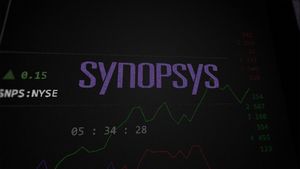This year has not been kind to investors, especially in small-caps. There haven’t been many good places to hide from the market carnage and each passing week has seemed to bring fresh lows and further pain. The iShares Core S&P Small-Cap ETF (NYSE: IJR) is a broad-based representation of the small company market and is down more than 16% year to date. The growth-focused iShares Small-Cap ETF (NASDAQ: IJT) is down more than 21% year to date, and the value-focused iShares Small-Cap ETF (NYSE: IJS) is down more than 27% year to date, so there have been no safe harbors to be found this year.
There could be some good news on the horizon, however, even with the small-cap space trading at the cheapest levels in more than twenty years. On a comparative basis, the S&P Small-Cap 600 Growth index is trading at the cheapest levels vs. the S&P 500 since 1998, when FactSet first began tracking that data. Small-cap stocks, especially growth stocks traditionally trade at a premium to their large-cap counterparts, but the small-cap indexes are now trading at a forward P/E discount to the S&P 500. If we see an eventual reversion to the norm, small-caps could be poised for tremendous upside.
Inflation and fears of a global recession have ravaged stocks this year, but the challenging macro environment could be more favorable to small-cap stocks. Many small companies are domestically focused, especially compared to large-cap multi-national corporations. A strengthening U.S. dollar could lift domestic small-cap stocks, especially if a U.S. recession is shorter and shallower than elsewhere in the world.
On the earnings front, all three small-cap ETFs are estimated to grow faster than the S&P 500, with estimates for IJR at 34%, IJT at 47%, and IJS at 26% respectively, compared to the S&P 500 growth estimate of 20%. Recent months have seen a massive divergence of market sentiment and fundamentals, so in theory, at least, faster-growing earnings should be rewarded if and when market conditions begin to normalize.
Speedboats are easier to maneuver than aircraft carriers, which require more time and space to turn. It is much easier for a small company to shift and pivot to react to changing economic conditions than it is for global multinationals with sprawling operations. Small companies can be nimble, and act quickly to capitalize on growing market segments or get out of dying ones. Larger firms have inherent bureaucracies s which make rapid shifts nearly impossible due to all the layers of management that decisions have to be run through. Small companies can be nimble and focused, so as the global economy recovers, they can be better positioned to grow revenues and earnings rapidly.
This year has been an absolute bloodbath for investors, but those who are focused on investing in high-quality small-cap companies, and have the patience to ride out the storm could be some of the best positioned when the markets (hopefully) start to head north again.
Disclosure: No position. Spotlight Growth has no relationships with any of the companies mentioned in this article and did not receive payment in any form for its creation. This is an opinion article and is not meant to be financial advise. We are not broker-dealers or investment professionals. Please conduct your own due diligence. For more information on our disclosures, please visit: https://spotlightgrowth.com/disclosures/
The post Small-Cap Stocks Haven’t Been this Cheap Relative to Large-Caps in Decades appeared first on Spotlight Growth.






